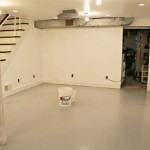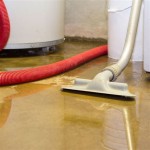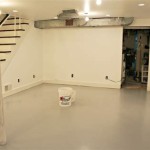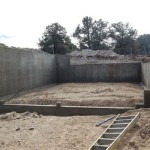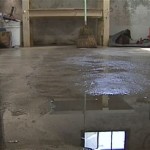How to Effectively Waterproof Basement Walls
Preventing water damage in basements is crucial for maintaining a healthy and habitable living space. When basement walls are not adequately waterproofed, moisture can seep in, leading to mold, mildew, structural damage, and unpleasant odors.
Inspection and Assessment
Before starting any waterproofing project, a thorough inspection is essential. Determine the source of moisture and identify areas where water is entering the basement. Check for cracks, holes, or gaps in the walls, floor, or foundation. You can also use a moisture meter to detect hidden moisture.
Exterior Waterproofing Methods
Exterior waterproofing focuses on preventing water from penetrating the basement walls from the outside. Here are some common methods:
- French Drain Installation: A French drain is a perforated pipe installed around the perimeter of the basement that collects and redirects groundwater away from the foundation.
- Exterior Sealants: Elastomeric or polyurethane sealants can be applied to the exterior walls to fill cracks and gaps, preventing water from seeping in.
- Waterproofing Membrane: A waterproofing membrane, such as rubberized asphalt or PVC, can be applied to the exterior walls to create a barrier against water.
- Subterranean Drains: These drains are installed below the basement floor to collect and pump out any water that penetrates the soil beneath the basement.
Interior Waterproofing Methods
Interior waterproofing aims to address water that has already entered the basement. These methods include:
- Interior Sealants: Sealants can be applied to the interior walls and floors to fill cracks and gaps, preventing further water penetration.
- Drain Tile Systems: These systems involve installing perforated pipes along the interior perimeter of the basement to collect and redirect water to a sump pump.
- Basement Waterproofing Paint: A specialized paint can be applied to interior walls to create a moisture-resistant barrier.
- Sump Pump: A sump pump is used to pump out water that collects in a sump basin installed in the lowest part of the basement.
Other Considerations
In addition to waterproofing methods, other factors to consider include:
- Grading: Ensure that the ground slopes away from the foundation to prevent water from pooling near the walls.
- Gutters and Downspouts: Extend gutters and downspouts away from the house to direct rainwater away from the foundation.
- Regular Maintenance: Periodically inspect and clean gutters and downspouts, and check for any signs of water damage.
Conclusion
Waterproofing basement walls is a comprehensive project that requires careful planning and execution. By following these essential steps, you can effectively prevent water damage and create a dry, healthy, and comfortable basement space.

How To Waterproof Your Basement True Value

Waterproofing Basement Floor Slabs And Walls Waterproof Magazine

Exterior Basement Waterproofing You Get A Free Estimate Wall Solutions By Olshan

Dampproofing And Waterproofing For Foundation Walls Fine Homebuilding

Exterior Basement Waterproofing You Get A Free Estimate Wall Solutions By Olshan

How Does Interior Basement Waterproofing Work

Foundation Waterproofing Below Grade Walls Resisto

5 Steps For How To Waterproof Basement Walls From The Inside Wise Cracks

Exterior Basement Waterproofing Kansas City Foundation 1

Angie S List How Can I Waterproof My Basement
See Also


